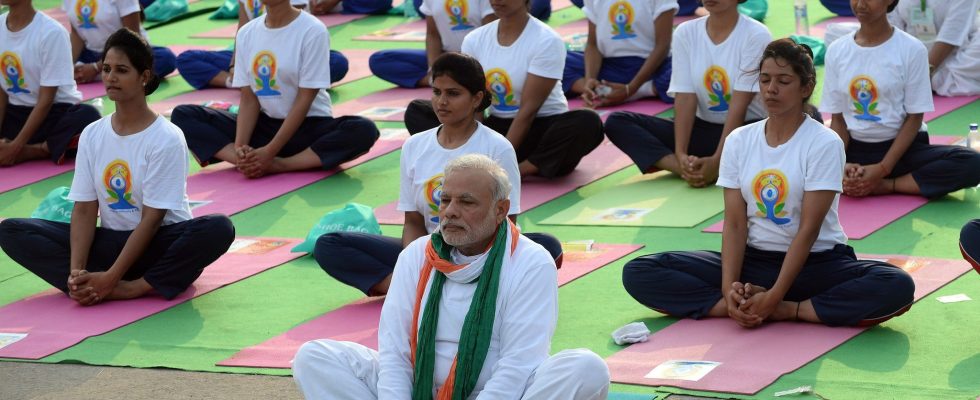The most enthusiastic are convinced: the 21st century will be Indian. This is what the boss of McKinsey & Company, Bob Sternfels, argues: he argues that the sub-continent will have 20% of the world’s working population in 2047. Morgan Stanley bank expects a “economic boom”. As for the United States and European countries, which seek to make it an ally against China, they also seem to be betting on their partnership with the South Asian giant.
“We must make India a developed country in the next twenty-five years, in our lifetime”, insisted in August 2022 the Indian Prime Minister Narendra Modi, adorned with a turban in the national colors, and convinced that New Delhi is called upon to play a leading global role.
Quite a symbol, India has become the most populous country on the planet in mid-April – to the chagrin of its Chinese rival -, according to the UN, which expects a population of 1.429 billion by the end of 2023.
Effectively engage youth
This demographic dynamism is a tremendous asset for India, which is still young when its Chinese, Japanese and South Korean competitors are aging rapidly: more than 40% of its population is under 25 years old. “This generation of young Indians will be the biggest source of consumption and labor in the knowledge economy [NDLR : l’économie immatérielle]says economist Shruti Rajagopalan in a note published at the end of 2022. Indians will be the largest pool of global talent.
Indian-born bosses already dominate Silicon Valley, from Sundar Pichai, CEO of Alphabet, Google’s parent company, to Satya Nadella, head of Microsoft. In India, the number of successful start-ups has multiplied in recent years: Fliparkt, an e-commerce platform acquired by Walmart; Zomato, Indian meal delivery giant; Ola, the “Indian Uber”…
Behind these showcases that are the pride of the elite, India still has enormous challenges to overcome, starting with youth unemployment, which stands at more than 23% according to the World Bank. And again, this figure does not include the informal sector (on which 80% of the population depends). A possible time bomb. Despite its dynamic growth – the IMF predicts 5.9% this year – India is unable to absorb the 9 million people who enter the labor market each year. According to economist Ashoka Mody, author of the book India is Broken (“India is broken”), the country will have to create “200 million jobs over the next decade” to “occupy all Indians of working age”. Mission impossible, according to this former World Bank.
Added to this is a training problem. India has academic institutions of excellence, but not enough. “India’s biggest challenge is to effectively engage its people, especially the younger generation,” said Biswajit Dhar, professor of economics at Jawaharlal-Nehru University in New Delhi. Industry bosses complain about training graduates who don’t have the right skills.”
To reverse the trend, India is trying to establish itself in global supply chains. In order to attract companies established in China, New Delhi has deployed “incentive programs” in a dozen manufacturing sectors. Main taker is Apple, which is set to open its first two stores in the country in New Delhi and Bombay, and produced $7 billion worth of phones in the territory last year. The American brand has become one of the biggest exporters of telephones in India via its subcontractors Foxconn, Wistron and Pegatron, which have set up factories in the country. But results in other areas are mixed. “The country is not ready, and this movement of companies from China to India will not happen, because we do not have the necessary infrastructure,” said economist Biswajit Dhar. While 800 million people still depend on government food aid, the Indian dream will wait a little longer…
